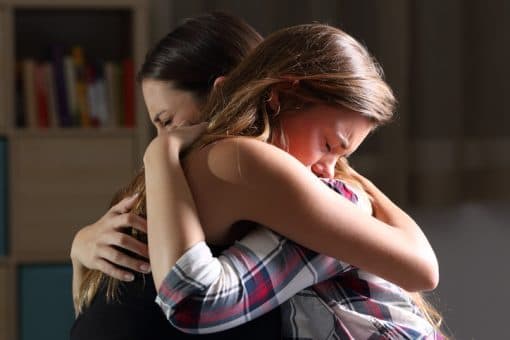Anxiety attacks are often interchangeably used with the term “panic attack,” and although they do share similar characteristics, symptoms of an anxiety attack differ from symptoms of a panic attack. The main difference between a panic attack and an anxiety attack is that anxiety attacks are a build-up of underlying anxiety, whereas panic attacks happen suddenly and sometimes without warning. If an individual is experiencing an anxiety attack, they most likely have generalized anxiety disorder, which is characterized by extreme worry, and fear that is excessive compared to the trigger. Missing the bus, getting stuck in traffic, driving on the freeway or paying monthly bills are everyday tasks that may cause extreme anxiety in individuals with generalized anxiety disorder.
When Anxiety Builds Up to an Anxiety Attack
Symptoms of anxiety include restlessness, irritability, muscle tension, trouble sleeping and trouble concentrating, to name a few. When these symptoms build up over time and become impossible to tolerate, an individual will most likely experience an anxiety attack. Symptoms of an anxiety attack include increased heart rate and shortness of breath that may last for approximately ten minutes or so. However, the underlying symptoms of anxiety are persistent and long-lasting, either for days, weeks or even months.
Panic Attack vs. Anxiety Attack
A panic attack is a term that is recognized by the Diagnostic and Statistical Manual of Mental Disorders, 5th edition (DSM V), as a collection of intense and sudden feelings of fear, nervousness, and terror that results in chest pain, a disconnection from oneself, trembling, increased heart rate and shortness of breath. Many individuals feel a sense of impending doom as if their life is in danger. Panic attacks occur with or without the diagnosis of panic disorder, which is a type of anxiety disorder that is characterized by recurrent panic attacks. Panic attacks last for about ten minutes, and then the individual will return to their normal state.
Anxiety attacks have similar symptoms to panic attacks (chest pain, shortness of breath, rapid heart rate, etc.); however, these symptoms are a build-up of underlying anxiety symptoms over time. Even after the anxiety attack subsides, the individual will still experience underlying symptoms of anxiety. The DSM V does not recognize the term “anxiety attack” but does acknowledge anxiety disorders and their subsets, including generalized anxiety disorder, panic disorder, separation anxiety disorder, agoraphobia, social anxiety and specific phobia.
Coping with an Anxiety Attack
Anxiety attacks are short-lasting, but the underlying anxiety disorder can last a long time. As a result, it is essential to treat the anxiety disorder to keep symptoms at bay in hopes of preventing an exacerbation, which can lead to an anxiety attack. Anxiety is best treated with psychotherapy, and in some cases, the addition of medication. Psychotherapy provides the individual with healthy coping mechanisms to deal with the signs and symptoms of anxiety and to prevent their worsening, leading to an anxiety attack. If an individual is experiencing an anxiety attack, they can practice breathing exercises and work on counting to ten to help calm their mind. Medications are rarely recommended for anxiety attacks since psychotherapy and coping techniques are first line-treatment options, as many medications for anxiety can be addictive.
If you or someone you know is struggling with anxiety, contact Discovery Mood & Anxiety Program to receive evidence-based treatment in one of our centers across the country.
Kristen Fuller, M.D., is a clinical content writer and enjoys writing about evidence-based topics in the cutting-edge world of mental health and addiction medicine. She is a family medicine physician and author, who also teaches and contributes to medicine board education. Her passion lies within educating the public on preventable diseases, including mental health disorders and the stigma associated with them. She is also an outdoor activist and spends most of her free time empowering other women to get outside into the backcountry.
